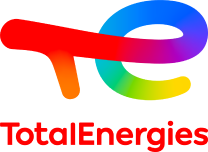Energy Q&A with Philippe Cordier
11/26/2020
Title: Energy Q&A with Philippe Cordier
Incrustation : What’s your job?
Philippe Cordier: I’m Research Program Director for Scientific Computing and Artificial Intelligence.
Incrustation : Describe your job in 3 words
Philippe Cordier: Energy transition, open innovation, creativity.
Incrustation : What are you working on at the moment?
Philippe Cordier: Low-carbon energies and digital for fighting climate change.
Incrustation : What’s your goal in your daily work?
Philippe Cordier: Anticipate and accelerate the development of new technologies to ease energy transition.
Incrustation : What is artificial intelligence, in concrete terms?
Philippe Cordier: It helps at accelerating low added-value tasks so that the engineers can focus on high added-value tasks.
Incrustation : Are Total and other big groups using AI for R&D?
Philippe Cordier: Total was using already AI in the 80s for exploration and production. But now it is using mainly AI for renewable electricity, for mobility and for new materials discovery. In Total, today, AI is everywhere.
Incrustation : What is the GEOSX project?
Philippe Cordier: GEOSX is a joint project between Stanford and Lawrence Livermore National Laboratory that aims at delivering an open-source simulator that is able to simulate, more accurately and more reliably, safe CO2 storage in geological formations, well below the subsurface.
Incrustation : What does “open source” mean?
Philippe Cordier: Climate change is the biggest challenge mankind has ever faced and for that, we need to share as much as possible our knowledge. And “open source” is a good way to do so. It’s also a way to enrich the simulator by opening to the whole community, so that we can really accelerate the development of CCUS.
Incrustation : What is the goal of the GEOSX project?
Philippe Cordier: The goal is to safely remove the CO2 from the atmosphere to produce what we call negative emissions in order to honor the 2°C scenario.To tackle climate change, we need to remove up to 6 billion tons of CO2 from the atmosphere. And this, for thousands of years.Geological storage of CO2, well below the surface, is probably the main technology that can help at solving this problem.
Incrustation : What’s the key to success in this kind of R&D project?
Philippe Cordier: Always mixing subject-matter experts with computer scientists and mathematicians.
Incrustation : What is CCUS?
Philippe Cordier: CCUS stands for “carbon capture, utilization and storage”. It’s an ensemble of technologies that aims at lowering the CO2 footprint of mankind. And also, to remove the CO2 from the atmosphere so that we can honor the 2°C scenario from the IEA International Energy Agency.
Incrustation : What would you say to convince a young developer to work for Total?
Philippe Cordier: f we want to make energy transition a reality and honor the 2°C scenario, we need to massify the development and the deployment of technologies at the world scale. Those technologies, generally, they are invented by startups but startups don’t have the financial resources to massify and deploy those technologies. This is what a multi-energy group like Total has as an advantage.



